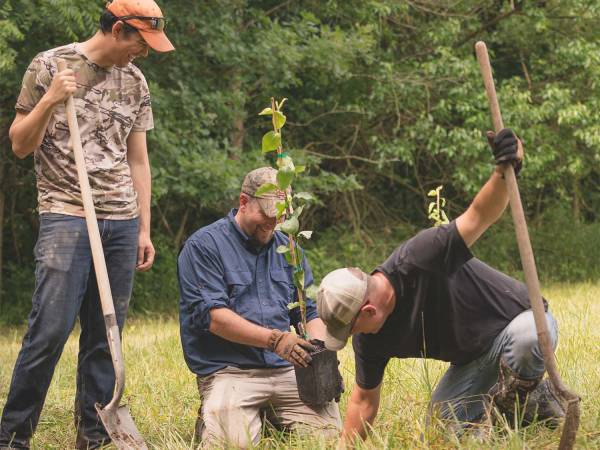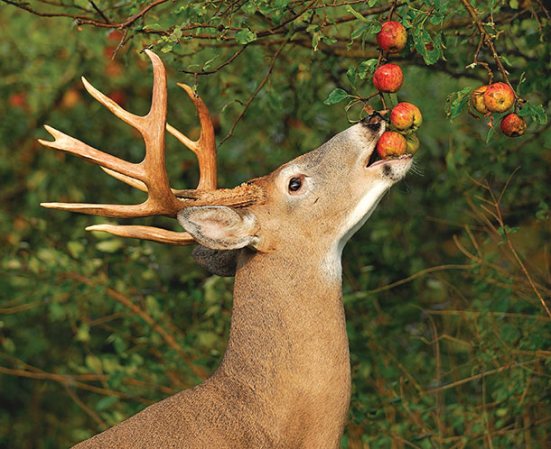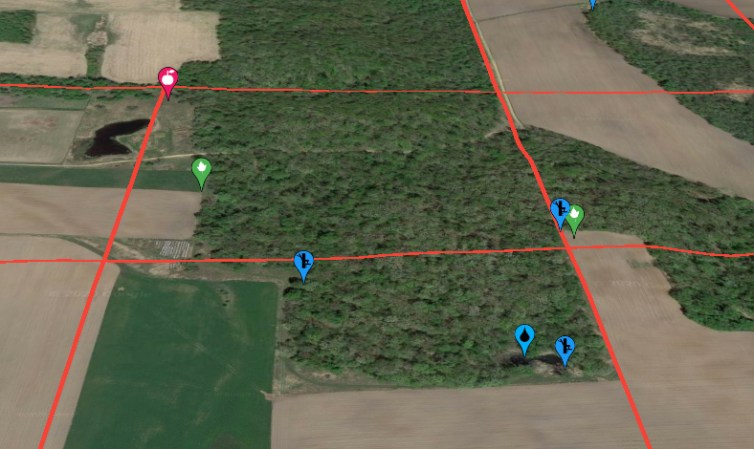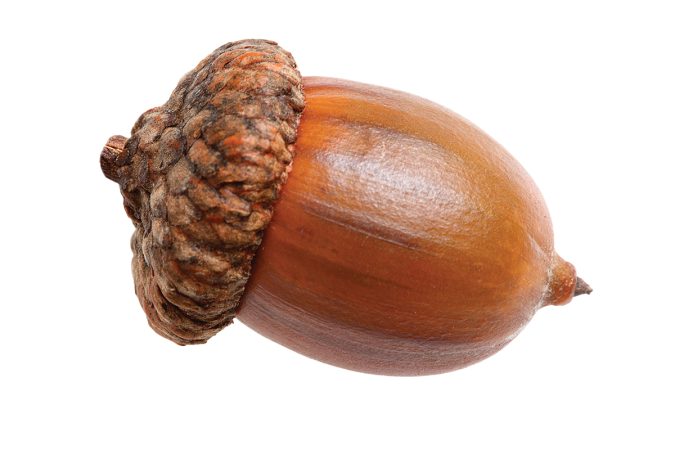Deer hunters seem to think the season hinges on whether the annual mast crop goes boom or bust, with either extreme furnishing a handy, if questionable, excuse for bad luck in the field. Lean acorn years bear the blame for a lack of deer sign in the woods, while an abundant mast crop will make the animals “tough to pattern.” Come on, guys, which way do you want it?
The truth is, acorns do play an important role in the fall movements of whitetails, no matter how you choose to interpret that relationshipäand, man, is there misinterpretation. There seems to be a proliferation of overly generalized information about mast within the hunting community. And bad woodsmanship can only hurt your scouting and hunting success. To clear up some of the confusion, here’s a primer on oak- tree biology — including some important differences in the ways different oak species produce their nuts — and several suggestions on how you can actually improve the annual acorn crop.
Red Oak vs. White Oak
Not all oaks are alike. Aside from the aesthetic differences, some oaks produce mature acorns in one growing season, while others require two.
One-season oaks are known as white-oak types, belonging to the Leucobalanus subgenera. These trees have a fruiting cycle analogous to that of an apple tree. Every spring, blooming female oak flowers are fertilized by the pollen from male flowers growing on the same tree and on nearby trees of the same species. If conditions are favorable, the female flowers set fruit (acorns), which matures over the summer and drops in the fall. All white oaks have leaves with rounded lobes. Among them are such species as the chestnut oak, swamp white oak and post oak and the group’s namesake, the white oak.
The cycle for two-season oaks is more complex. Known as red-oak types (Erythrobalanus), these trees begin to develop their fruit the same way white oaks do, but instead of swelling into full-fledged acorns their first summer, the nuts remain stunted woody knobs into the following spring. Then, in their second spring, these knobs begin growing again and drop as mature acorns during that fall. Although red-oak-type trees require two years to produce an acorn crop, they flower every spring, whether or not they have immature acorns. That means they also have the potential to produce a crop of acorns every year as long as the conditions for fruit-set are favorable year after year. The lobes of red oak leaves are pointed and include species such as the red oak, black oak, pin oak and scarlet oak.
Oak flowers of both types have a fertilization window of only about 10 days, during which any number of things can occur to make or break the mast crop. High humidity, for example, prevents male flowers from blooming and releasing their pollen. A spring frost during or shortly after flowering will kill the flowers or the newly formed acorn fruit. Such events would mean that white oaks would experience a mast failure in the same year, but that red oaks would go bust the autumn after that.
How to Manage Your Oaks
Let’s say you’re a deer hunter who wants to improve the acorn prospects where you hang your tree stand. First, take an inventory of your oaks to determine what percentage of them are white-oak or red-oak types. Ideally, you want a breakdown close to 50-50, because diversified stands produce acorns more reliably. Next, determine whether the trees are shading each other. Crowded oaks expend energy competing for sunlight that could otherwise be used to make acorns. Thinning a crowded stand releases space around the remaining trees, encouraging them to grow the fuller crowns that will produce more nuts. Be selective when you remove trees. You want to maintain a balance of oak types, perpetuate good mast producers and leave trees that are growing on optimal sites.
Your process of elimination might go something likee this:
- If two oaks are crowding each other and one is a red oak and the other is a white oak, remove the one that is more prevalent in the entire woodlot.
- If the trees are of the same type, remove the one that has a history of producing less mast since it probably lacks the genetic potential for high acorn yields.
- If no discernable differences exist between two similar trees and they’re growing on a slope, remove the oak that sits lower. Frost tends to settle in low areas, which means that oaks growing in low spots are most vulnerable to frost damage. One study revealed that as little as a two-foot rise in elevation is enough to prevent frost damage in trees.
Spare the chain saw if your trees are getting enough sunlight. And if space permits, consider planting more oaks — it can pay off more quickly than you might expect. The gobbler sawtooth oak (Quercus acutissima), for example, is a fast-growing, high-acorn-yielding species that grows in a variety of soils along much of the East Coast and into the Midwest. Well-maintained trees planted in good soil can start to produce nuts after just five to eight years.
Does Fertilizer Work?
Treating oaks with fertilizer is often touted as an easy way to boost acorn yields, yet little scientific evidence exists to support such a claim. One study tested the effects of fertilizer on scrub and dwarf chinkapin oaks and found no difference in acorn yieldsäwith one exception: oaks that were past their prime mast-producing age did show increases in yield.
Determining that an oak is past its peak acorn-producing age is difficult. Aging a tree is best done with an increment borer, which extracts a sample of the tree’s growth rings. However, these instruments are expensive (more than $150) and easily broken, so you’ll want a trained forester to take the sample. When you know a tree’s age, identify the species and look up its average life span and peak acorn-producing years. If that seems like too much trouble, there’s no harm in giving a tree whose acorn crop appears to be thinning some 5-10-5 fertilizer early in the spring. Although this approach is decidedly hit-or-miss, especially since other factors may be hampering its yield, you might extend a tree’s production peak by a few years with relatively little effort.
Finally, keep an oak diary. Detailed records remind you when, where and what practices were undertaken on a specific woodlot. At least as important, they allow you to compare the mast crop from year to year to quantify your successes. Hey, your greatest success might be the first time you can use the “mast situation” as the reason for a successful deer season, rather than as an excuse for striking out.






